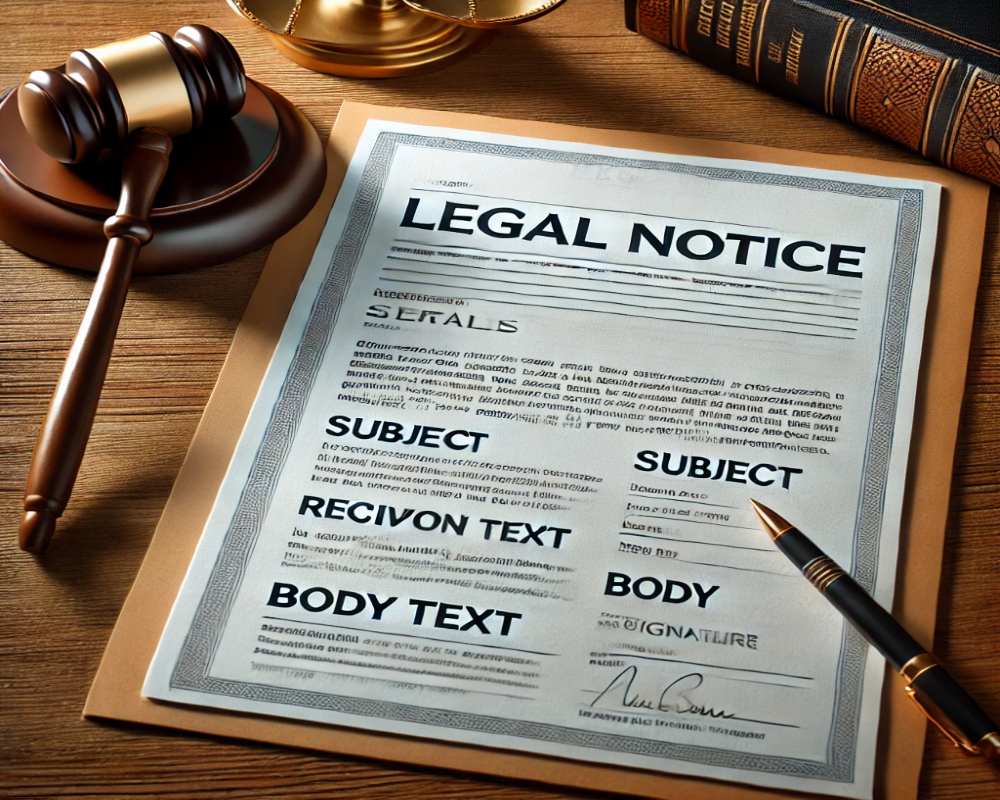Introduction
In a partnership firm, each partner is expected to fulfill their duties and obligations as outlined in the partnership deed and under the Indian Partnership Act, 1932. However, disputes or misconduct may arise when a partner fails to meet their responsibilities, commits a breach of contract, misuses firm funds, or acts against the interest of the business. In such cases, issuing a legal notice is often the first formal step toward resolving the issue or initiating legal action. A legal notice serves as a formal intimation to the defaulting partner about their misconduct and gives them an opportunity to respond or correct their actions. This detailed explanation outlines the structured method of issuing legal notices to defaulting partners, ensuring it is done lawfully, clearly, and effectively.
Identify Grounds for Default
The process begins by clearly identifying the grounds of default. This may include financial irregularities, non-performance of duties, violation of terms in the partnership deed, unauthorized withdrawals, misrepresentation, non-cooperation, or any act prejudicial to the interests of the firm. It is essential to substantiate the default with documented evidence such as meeting records, transaction details, communication records, or accounting discrepancies. This helps in establishing a legally sound foundation for the notice and avoids vague or baseless allegations.
Consult the Partnership Deed and Legal Provisions
Before drafting the notice, the existing partnership deed should be reviewed to understand the clauses related to default, dispute resolution, expulsion, and exit. Some deeds may specify procedures for handling disputes, including internal mediation or time-bound notices. Additionally, the provisions under the Indian Partnership Act, 1932, especially Sections 9, 10, 11, and 32 to 35, may offer guidance on duties, breach consequences, and retirement or expulsion of a partner. This legal groundwork ensures that the notice is issued in alignment with contractual and statutory rights.
Engage a Legal Professional for Drafting
Though not mandatory, it is highly advisable to engage a qualified legal practitioner to draft the notice. A legal notice is a formal and often sensitive document that must be professionally worded, free of emotion or threats, and legally precise. The advocate will ensure that the notice includes correct legal references, facts, and demands, and is presented in a structured format that holds up in future litigation if needed.
Structure and Content of the Legal Notice
The legal notice should be addressed directly to the defaulting partner and must include the following components:
- Name and address of the sender and recipient,
- Date of issuance of the notice,
- Reference to the partnership firm and relevant deed,
- Clear statement of the acts of default along with dates and supporting facts,
- Explanation of the breach of terms or legal violations,
- Consequences of continued default, including legal or financial liability,
- Specific demands or remedial actions expected, such as repayment of funds, resumption of duties, or resignation,
- Time frame (usually 7 to 15 days) for compliance or response,
- Statement of intent to initiate legal action in case of non-compliance.
The notice should be signed by the authorized partner or the legal representative acting on their behalf.
Mode of Delivery and Proof of Service
To ensure proper legal standing, the legal notice must be delivered through registered post with acknowledgment due (RPAD), courier with delivery tracking, or email with read receipt, if permitted. The goal is to establish proof of service, showing that the recipient received the notice and had an opportunity to respond. This proof is critical if the matter escalates to a civil suit or arbitration.
Wait for the Response Period
After serving the notice, a waiting period must be observed, giving the defaulting partner a fair chance to reply or comply with the notice. During this period, further action should be paused unless the breach is urgent or causing irreparable harm. The partner may respond by accepting the default and offering resolution, disputing the allegations, or seeking negotiation. All responses should be documented and preserved as part of the legal record.
Initiate Further Legal Action if Necessary
If the partner fails to respond, refuses to comply, or disputes the claims without justification, the firm may proceed with legal remedies. These include:
- Filing a civil suit for damages or injunction,
- Initiating arbitration or mediation if agreed in the partnership deed,
- Filing for expulsion or dissolution of the firm under Sections 33 and 44 of the Partnership Act,
- Seeking accounting and settlement of the firm’s assets and liabilities.
The legal notice serves as a foundational document in all these proceedings, demonstrating the firm’s intent to resolve the matter amicably before turning to litigation.
Conclusion
Issuing a legal notice to a defaulting partner is a structured legal step that enables the partnership firm to formally address misconduct or breach of duty. It upholds the principles of fairness, accountability, and due process while preserving the firm’s legal rights. By clearly stating the facts, referencing the partnership deed, engaging legal expertise, and maintaining proper documentation, the firm ensures that the notice is both effective and legally enforceable. A well-drafted legal notice can often lead to resolution without the need for court intervention, thereby protecting the interests of the partnership and preserving professional relationships wherever possible.
Hashtags
#LegalNotices #DefaultingPartners #BusinessLaw #PartnershipAgreement #LegalAdvice #ContractLaw #BusinessPartners #LegalRights #DebtRecovery #PartnershipDisputes #LegalProcess #NoticeToPartners #BusinessCompliance #LegalDocumentation #PartnershipIssues #LawyerAdvice #LegalHelp #BusinessLawyer #PartnershipLegalities #DebtManagement


0 Comments